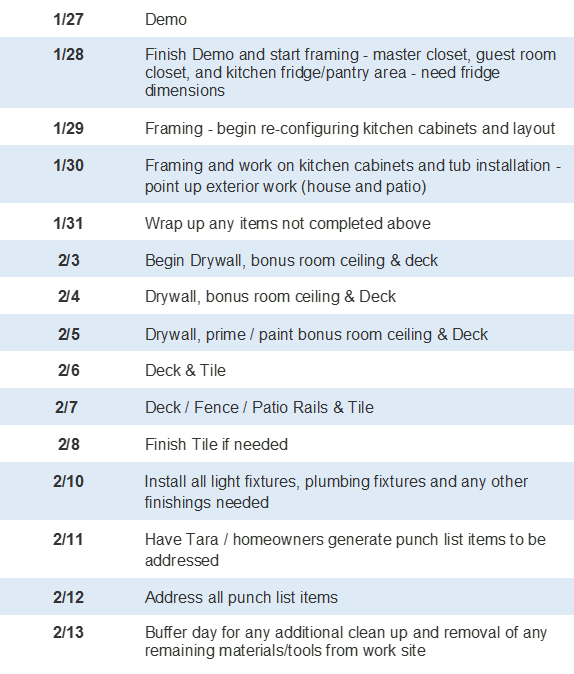Good afternoon. We had one of our followers contact us with a question yesterday, and we wanted to respond here because it’s a common question that we get at Lodestone Real Estate. The question is below:
Can you give advice on how to purchase a foreclosed home? My wife and I missed the opportunity of a lifetime because we had no idea where to start!
Thank you for your time, and I look forward to hearing from you soon.
I’m sorry you missed the opportunity, but trust me, it happens to the best of us. You’ve asked a big question here. There is a lot of noise out there about buying foreclosures, flipping and investing in real estate. We’ll try to cut through that noise like a machete through bamboo [We will eventually link to a story about how we are managing our bamboo problem].
Here are some things you need to know:
- Not all “foreclosures” are created equal. When people say “foreclosure,” they can mean a lot of things. They’re not all really foreclosures by the technical definition. There are REOs (what we bought), short sales and true foreclosures. What do these mean? I’m glad I asked.
- REOs: these are the most common types of “foreclosures” that your friends and family are buying. REO stands for “real estate owned” and occurs when a lender has taken possession of the property, often listing it on the market just like any other home. Common sellers include banks and commercial lending institutions, Fannie Mae, Freddie Mac and HUD. You can find these properties in your local MLS and also by checking out Homepath.com, Homesteps.com and HUDhomestore.com
- Short Sales: Also known as the Devil’s Backbone of foreclosures. Short sales occur when a homeowner is behind in payments and tries to sell a home for less than what is owed. These homes are often listed for very low prices. Thing is, the lender has to approve the offer amount. This happened more frequently in the trough of the Great Recession because banks were dumping risky assets. Those days are gone. Submitting an offer on a short sale can take months for lender approval and you still may get a “no” from the lender. If you go this route, make sure you have plenty of time and patience in inventory.
- Foreclosure Auctions: When a lender or lienholder foreclosures on a property, it is often auctioned off at courthouses and private auctions. These often get auctioned sight-unseen and are rife with risk. It can be done, but this approach is best designed for the seasoned investor who is flush with cash and comfortable with the risks.
- Getting a “deal.” The reason everyone wants to buy a distressed property is because they think they can get a deal. This is true – sorta. During the worst years of the recession, banks were dumping assets and lenders were accepting all sorts of low-ball offers. Did you miss out on that? So did most people. Those who capitalized on that were well-positioned with lots of cash or liquid assets and were able to pounce on the opportunities offered by the Great Recession. In general, once you’re comfortable that there’s a recovery underfoot, you’ve missed the party. By the time this article is published in the Observer, all the best deals are gone. The market is recovering though, and rates are still very low, so if you really want a deal, be ready, be patient and make sure you, your lender and your real estate agent are prepared to act quickly when the time is right. You are going to miss some deals. It happens. There will be more. Be patient.
- Tips & Tricks.
- Find a real estate agent who has experience buying foreclosures and REOs. I’m biased, but the folks at Lodestone have closed hundreds of foreclosure and distressed property sales. Contact Lodestone for more information about how to start that process.
- Watch the REO sites mentioned above. Look for properties that have been on the market for 90 days. Fannie, Freddie and other lenders become increasingly willing to negotiate as time passes. Our home was on the market for 120 days when they accepted our offer at a 25% discount to the initial list price.
- Do not pay the initial price for an REO that needs significant repair. Do your diligence and know what makes sense for the repairs you’ll have to make. Don’t fall subject to the winner’s curse and overpay just because you want to say you bought a “foreclosure.” Lenders will market these at the top of the market for the first few weeks to see if anyone will bite. Be patient.
- Take a seasoned project manager and/or contractor with you who can give you a rough estimate of repair costs and identify issues that you may otherwise miss. You won’t have much time for this once you’ve had an offer accepted (Fannie and Freddie require a short, 10-day diligence period). Know what you’re getting into.
- Be ready to back out and lose a little money if you discover something that makes it a bad investment. When you perform inspections, you’re paying for that information. If that information shows you something that is going to be costly or interfere with your planned renovations, you need to be ready to walk.
I hope this information has been helpful to you. If you’re interested in working with me as a client, don’t hesitate to contact me. We have a lot of strong investment opportunities that we see every day and would be happy to help you put your money to work.




